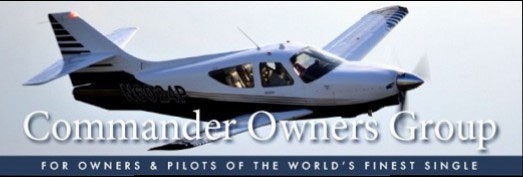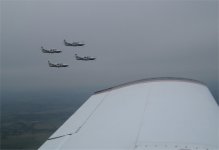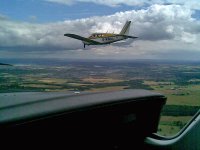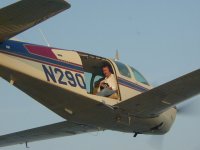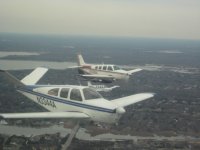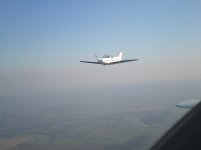Lawrence Rippon
New member
LEICESTER UK
- Aircraft Year
- 1977
- Aircraft Type
- 112B
- Reg Number
- G-BEPY
- Serial Number
- 524
It's a quiet day at the office today, so I decided not to waste any time and have formed a close formation aerobatic team featuring similar Rockwell Commanders.
I thought you may like to see some pictures from this morning's first practice session.
As you can see we are perfecting the simple "Diamond" formation before attempting anything more spectacular.
I thought you may like to see some pictures from this morning's first practice session.
As you can see we are perfecting the simple "Diamond" formation before attempting anything more spectacular.
